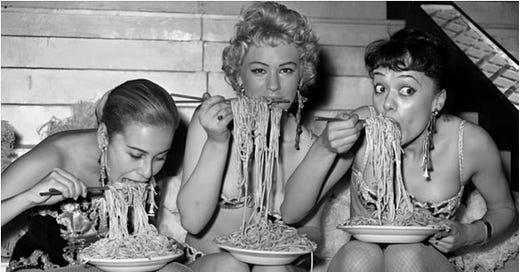In recent years, discussions within scientific communities have highlighted the intricate impact nutrition has on hormone health.1 As women, our bodies rely on a delicate balance of hormones to regulate various bodily functions, including metabolism and mood. By fueling our bodies with the right nutrients, we can support hormonal activity and promote overall well-being.2,3 One of the most exciting aspects of this discovery is the realization that women have the power to influence their hormonal health through dietary choices. Instead of letting fluctuating hormones dictate eating behaviors, mood, and energy levels, women can take proactive steps to empower themselves and regain control!
The Importance of Menstrual Health:
Menstrual health is a vital aspect of a woman’s overall well-being, yet it’s often overlooked or met with discomfort in discussions. However, understanding the intricate relationship between nutrition, lifestyle, and menstrual health is key to empowering women to take control of their bodies and live fulfilling lives.
The menstrual cycle isn’t just a monthly inconvenience; it’s a fundamental indicator of reproductive and overall health.4 Disruptions in hormonal balance can lead to a range of issues, from mood swings, intense cravings, fatigue, sleep issues, headaches, irregular periods, debilitating cramps, and more! With as many as 90% of adolescent females experiencing menstrual problems, it’s clear that addressing menstrual health is essential for women of all ages.5
These challenges emphasize the need for a holistic approach to menstrual health. What is exciting is knowing that there is something we, as women, can do to get a hold of our hormones and not let fluctuating hormones control our eating behaviors, mood, or energy. Rather women can take proactive steps to empower themselves and regain control over symptoms in addressing nutrition, lifestyle, and overall self-care.
Here are Three Strategies to Support Hormonal Health:
No. 1 Prioritize Hormone-Supportive Foods:
Eating the proper foods throughout your menstrual cycle has been associated with lessened PMS symptoms among women.1,2,6 Specific nutrients to prioritize during each stage of your cycle are as follows:
For Menstrual (the 1 to 7 days during your bleed)
During menstruation a woman can shed her uterine lining, in doing so, a loss of iron and key nutrients are shed with it.10 Recent literature suggests foods high in magnesium and iron are very important during this time of the month.2 Iron is important as a woman is losing blood and iron, and magnesium works by relaxing the smooth muscle of the uterus and by reducing the prostaglandins that cause period pain.10 Moreover, reduce (to the best of your ability) inflammatory foods like processed sugars, seed oils, salt, alcohol, and processed snacks, as an increase in these foods is linked to more severe symptoms.1,4
Examples of magnesium and iron-rich foods: Dark leafy greens ( Pro tip! Add vitamin C to increase iron absorption.), Red meat, Nuts (almonds and hemp seeds), Seaweed, Bananas, and Avocado.
Follicular phase
(the 7-10 days after your period ends):
The follicular phase is when estrogen is high, and your body needs to be able to effectively metabolize the increase in estrogen.4 In doing so, The health of your gut microbiome plays a crucial role in hormone regulation and overall well-being. To support gut health, probiotic-rich foods, fiber, and lots of water should be included.4
Examples of Probiotic foods are Yogurt or kefir, Sauerkraut, Kimchi, Sprouted beans and seeds, Sourdough bread, and Tempeh.
Fiber: any fruit and vegetable, specifically cabbage, cauliflower, broccoli, carrots, and beetroots.
Ovulatory phase
(the 3 to 4 days in the middle of your cycle. You are most fertile)
Support your liver to process out all the estrogen with teas and limit the inflammatory foods as much as possible: these include processed sugars, processed meats, salt, alcohol, and seed oils.1,4
Anti-inflammatory foods include teas, berries, turmeric, and fiber-rich vegetables–all are great things to prioritize during this phase of your cycle.4
Luteal Phase
(the 10-14 days after ovulation, before you bleed)
Estrogen and progesterone rise and fall during this time of the month. To Support your shifting hormones, include foods that bring you joy and are high in magnesium and B vitamins.1,4
Magnesium-rich foods: dark chocolate, avocado, quinoa, sweet potato, spinach
B-vitamin-rich foods: eggs and fish
No. 2 Exercise According to Your Menstrual Cycle:
Did you know that women’s hormone levels fluctuate throughout their menstrual cycle, influencing their energy levels and exercise capacity? You can optimize your exercise routine for hormonal balance and overall well-being by tailoring your workouts to match your cycle phase.
For Menstrual (the 3 to 7 days during your bleed)
Your hormones are at their lowest levels during this time; thus, being gentle with your body is important. Examples of workouts include an evening stroll, gentle walking, or light yoga. Keep your workouts relaxed, even if you are not feeling discomfort.4
Follicular phase (the 7-10 days after your period ends)
Your estrogen will be low, and your cortisol levels will be steady. You will most likely feel energy levels coming back from being low during menstruation.4 This is the perfect time to try more intense workouts that include cardio. Go for a run, do flow yoga, hike, bike, or do anything that gets your blood pumping!
Ovulatory phase (the 3 to 4 days in the middle of your cycle. You are most fertile)
The ovulatory phase is when you have the most energy and feel your best. The hormone testosterone is high during this phase; you’ll have tons of energy each morning.4 My recommendation? Take advantage of this high and go all out at the gym or outdoors. Try high-intensity interval training (HIIT), bodyweight circuits, kickboxing, or spin classes.
Luteal Phase (the 10-14 days after ovulation, before you bleed)
At this time, your hormones are going to begin to drop as you transition into your menstrual phase again; you might still feel lots of energy during the first half of your Luteal phase, this is fine to continue your High-intensity workouts as you did in your ovulation.4 However, as you get closer to the second half of the Luteal phase start to wind down a bit, especially if you’re experiencing PMS symptoms. This is a great time to incorporate Pilates, yoga, or strength training.
No. 3 Eat Enough Protein at Every Meal:
Protein is vital for your body because it helps make peptide hormones.7 These hormones are likened to messengers that tell your body what to do. They control functions like how much you grow, how much energy you use, how hungry you feel, and even how stressed you are.7
Your body gets the amino acids it needs to make these hormones from the protein you eat. For example, eating protein can help you feel full because it tells your brain you have enough to eat. This happens because protein lowers the level of a hormone called ghrelin (which makes you hungry) and boosts other hormones that make you feel full, like peptide YY (PYY) and glucagon-like peptide-1 (GLP-1).7
Experts recommend eating a minimum of 15–30 grams of protein per meal.8 At each meal, you can include high-protein foods such as eggs, chicken breast, lentils, or fish. Recent literature suggests that consuming protein during the luteal and menstrual phases is the most important way to help with PMS symptoms.2 Recent literature suggests a possible treatment for menstrual pain is ‘moderate physical exercise may help with relieving pain.9
Examples of protein are eggs, dairy products, chicken, lentils, beans, fish, venison, seafood, tofu, and beef.
Have any questions for me? Free to ask away! This is a learning platform










This is so great! I am very interested in all things hormone health, and really appreciate this deep dive. Can you do more content sharing cycle syncing?